30-second summary:
- The best social media strategy should not focus on lead generation but on building brand loyalty. How can you utilize social media platforms to make your brand talk of the town?
- A good social media strategy should have a measurable end goal in mind. Find out how SMART goals eliminate the influence of vanity social media metrics.
- Strive to understand who your target audience is. Are your social media followers a mirror image of your potential customer?
- Should your social media strategy stick by the rules of the trade and only use tried and proven platforms? Should you innovate and use unconventional platforms?
- This article broaches all these questions and presents you with examples of real-life brands that have excelled at their social media approach, by playing by the rules and at times, going into uncharted social media waters.
Amazon’s founder Jeff Bezos once said that a major determinant of your brand’s potency is what people say about it when you are out of the room. Unfortunately, many business owners only equate their brand to its visual identity, its tagline, and its logo. The only reason, however, why you should go to great lengths to create a cool logo or place promotional advertisements is to strengthen or grow a loyal customer base.
You need your clients to be so fascinated with your brand that they should not just buy your goods or services but identify with your business’s ethos. Social media is a formidable channel for building brand loyalty. A humor laden 140 characters or less tweet can lead to massive exposure on Twitter, an achievement that would take other forms of advertising, very large budgets to achieve.
Data shows that product information on social media platforms influences the shopping habits of at least 75% of American consumers. These platforms are also very critical to the discovery of new services, goods, or brands because 33% of all buyers unearth novel items from social media. This is the reason why, over 72% of all savvy marketers, use these internet mediums to access and build the most loyal of fan bases.
92% of businesses that have robust social forums following can attest that these online podiums have increased their brand’s online visibility. Consequently, every business should not only have a social media presence but a strategy as well. Your social media strategy is a blueprint that takes into consideration, all the details, and processes that govern brand social media activity.
A good social platform game plan should answer questions regarding the when, who, what, and why your brand should interact with the internet community. A well thought out social media strategy can:
- Build brand awareness
- Improve brand authority and loyalty
- Revamp customer service
- Increase your customer engagement rates
- Enhance your conversion rates
- Grow your web traffic rates via content distribution
1. Get SMART and precise with your goals
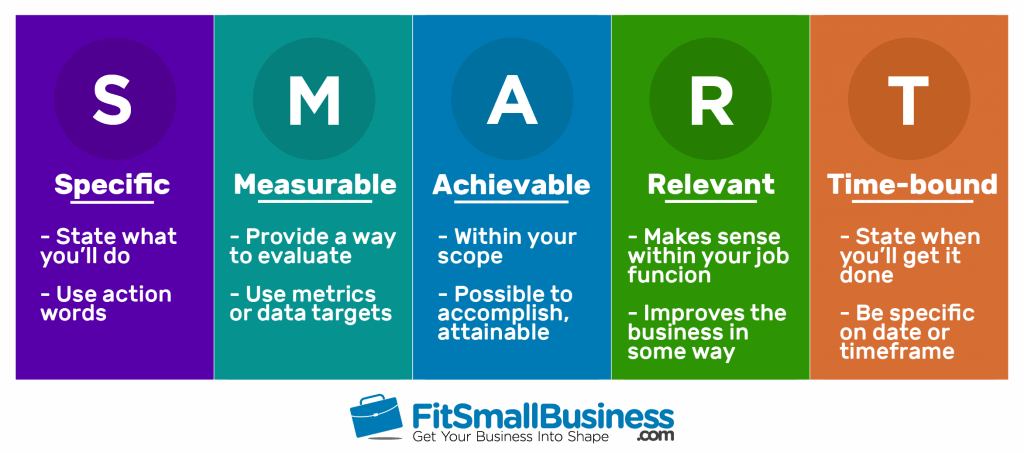
Source
Like many businesses, you might have a social media presence but have no defined goals that help measure your strategy’s success. The first key element of a successful social media strategy is a realistic and relevant marketing goal. Why do you want to market on these forums? What is the end-product of your efforts? Do you plan to increase website traffic, promote a product, or contact customers?
Choose social media goals that enhance your business’ strategic goals. Make these goals SMART meaning they should not just be distinct, but measurable, within reach, relevant, and time-bound. SMART goals ensure that your marketers look beyond vanity metrics such as the number of likes or followers. They for instance will use useful statistics such as post reach to measure a brand awareness objective.
As an illustration, most luggage brands’ marketing content is chock-full of product features. AwayTravel.com has chosen to sell their suitcases differently. On Instagram, they have a following that talks more about the experiences that Away luggage can enable.
On the brand’s page, you will find exquisite user-generated travel images from all parts of the world, inspiring its potential and loyal customers. The brand’s strategy is to portray itself not as a suitcase seller but as a travel brand. Their strategy has paid off so well that in less than three years of activity on social media, they have over 547K followers on Instagram. They have also amassed a useful, massive celebrity following.
Because Away’s goal is to attract and engage with travelers, they will not waste money buying fake Instagram followers. They need active travelers that will engage with the brand, which in the end creates revenue. Since engagement is one of the most critical goals for this brand, its marketers will actively monitor metrics such as brand awareness, applause, average engagement, amplification, and virality rates.
2. Choose a target audience that reflects your customer persona
Once you have your “why” in the bag, you need to figure out who your target audience is. When you have a well-defined target audience in mind, you will find it easier to create appropriate content. Creating content on the platforms that are more inundated by your audience of choice will also be less of a challenge.
As an illustration, on a typical day, Lauren Dix’s 73.6k Instagram followers will be actively listening to her hushed tones as she dons outfits inside one of Madewell’s dressing room. Lauren’s massive fans will giggle at her attempts to communicate with them without spooking her neighbor in the next dressing room. She will try on the brand’s tasteful denim collection and decide whether her jeans ensemble is worth its $30 tag or not, then move on to her next story. The fashion influencer only displays clothing items from affordable brands like Madewell.
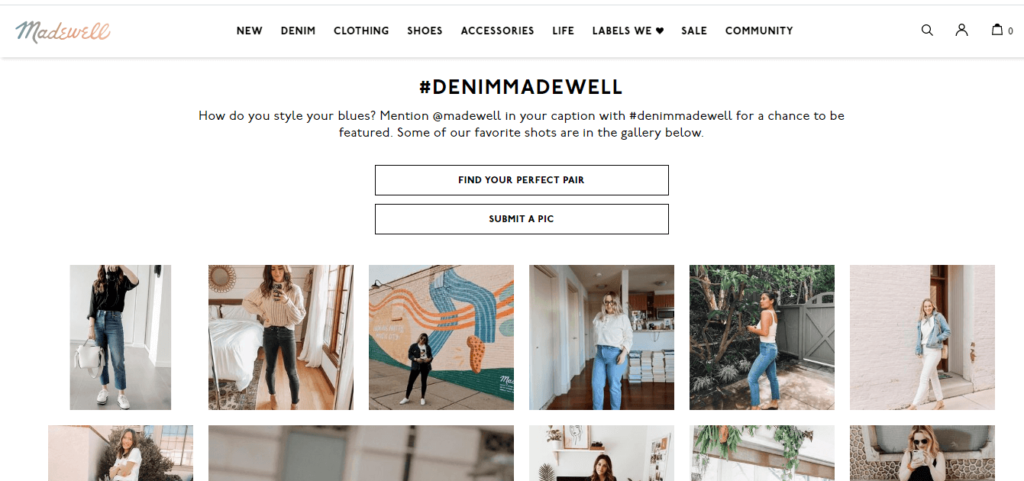
Source: Madewell.com
J.Crew, a clothing retailer and Madewell’s parent company is over seven decades old. J.Crew has been reporting losses for the last few years, but Madewell has seen its revenue increase in the same period. The brand’s chic universal basic and denim lines have a small brick and mortar footprint than its mother brand making 40% of its sales online.
Madewell’s social media strategy is so successful that it has over 1.4 million Instagram followers and is one of the best examples out there of a master plan that precisely answers the “who” element of internet community marketing. Madewell’s focus is on increasing its social media engagement amongst millennials.
Data shows that over 59% of the millennial women between the ages of 18 to 29 spend most of their time on Instagram. The brand has a consistent free-spirited, artsy, and non-maximalist brand identity that appeals to this segment. Consequently, while Madewell is active on other platforms it is so particular about its Instagram presence, that it has a website page dedicated to Instagram customer posts. In 2018, Madewell won an overall best brand presence Webby Award.
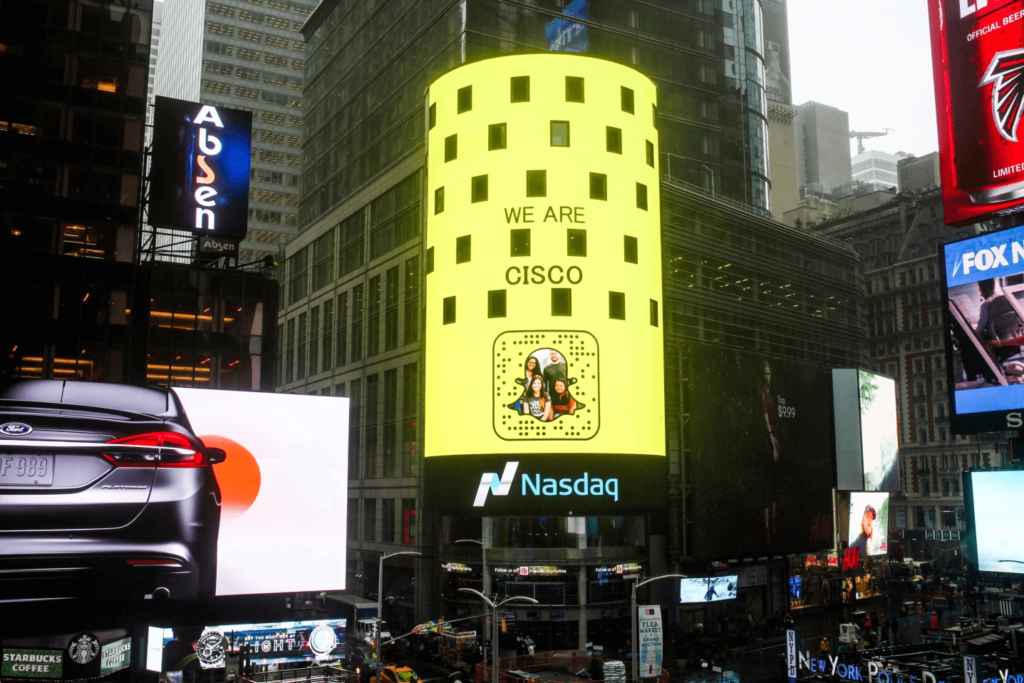
Source
Most B2B brands often avoid snazzy social media platforms like Snapchat or Instagram. You will find them on platforms for professionals like LinkedIn because 80% of B2B leads come from this network of professionals. This is the reason why 94% of B2B marketers turn to LinkedIn for content distribution.
The platform’s acquisition by Microsoft has expanded its business features and functionality, making it a stand up and authoritative tool for business sales teams. Cisco’s social media strategists have however put a new spin on the B2B Snapchat social media experience. After identifying a need to engage Gen Z, a large portion of the business’s young technophile hires, Cisco turned to Snapchat and has enjoyed a lot of success at it.
Snapchat has 46 million active users each month in the US. Over 53% of US Gen Z between the ages of 15 and 25 years use Snapchat and are the largest demographic on the platform. The technology firm’s need to create a robust talent pipeline has actualized via their massive Snapchat success, connecting them to new graduates and university students from all parts of the globe.
Your social media followers should be similar to your potential customer persona. Some of the metrics that you should use when determining your target audience includes;
- The income, age, location, education, or title of your audience
- Your potential audience’s interests such as educative, informational, or entertainment
- Time when your brand’s following is online, weekends, lunch hour, evening and morning commutes
- Knowing what their motivations are, could range in anything between fitness and travel to high-level skills
- The type of content that they prefer; is it video, blog posts or infographics
3. Use the right platform
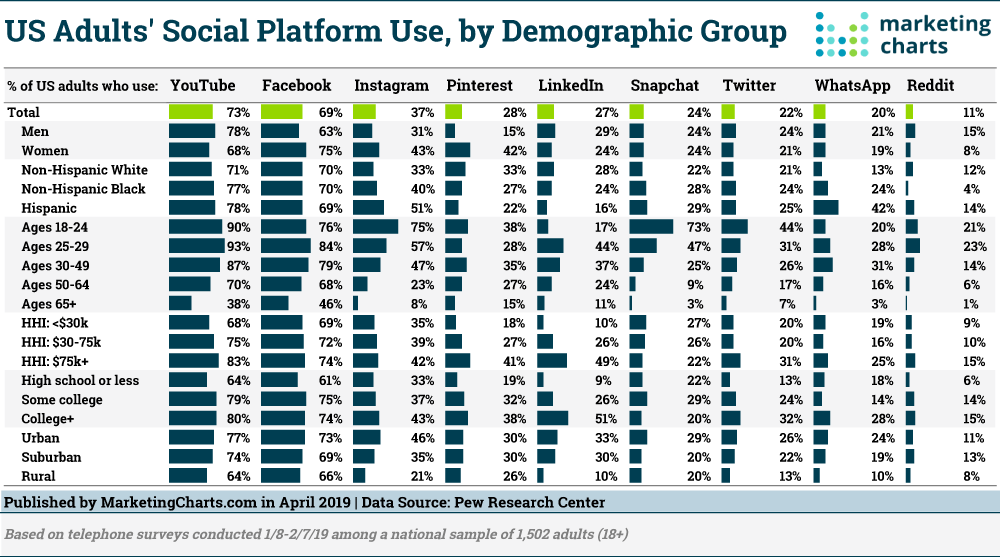
Source
You need to gauge different social media forums and choose which particular one(s) you should focus more on. The metric that Facebook attracts 2.3 billion active users each month is very attractive. Nevertheless, if your brand needs younger people, you will not find this demographic well-represented on Facebook. This target audience frequents Instagram and Snapchat.
Nevertheless, do not put your strategy at the mercy of popular social media data. As an illustration, data shows that 63% of all B2B marketers rate LinkedIn as the most effective social media-marketing forum. This metric tends to keep B2B brands captive on this professional platform for its lead generation opportunities. Your social media strategy’s purpose however is not a lead generation but a brand enhancement strategy.
B2B brands that want to generate leads should go to social media not to sell, but to tell stories that spark conversations and that appeal to human emotions. A brand that has its strategy down pat will have multiple possibilities open to it. Novartis for instance has a 2.2 million following on LinkedIn and 268 thousand followers on Twitter.
You will also find the pharmaceutical company on Facebook, Instagram, and YouTube. On Instagram, the brand tells stories of nature and medicine, pushing traffic to its site Beautiful Medicine. On YouTube, you will find financial, scientific, and patient views videos.

Source: Beautifulmedicine.com
GoPro is one of those rare B2C brands that seem to utilize all the major platforms to its advantage. The versatile camera brand has a close to 11 million Facebook followers and 17 million Instagram fans. It also has 2.3 million Twitter followers. So how does GoPro create value, promote products, and interact with a wide customer demographic on various platforms?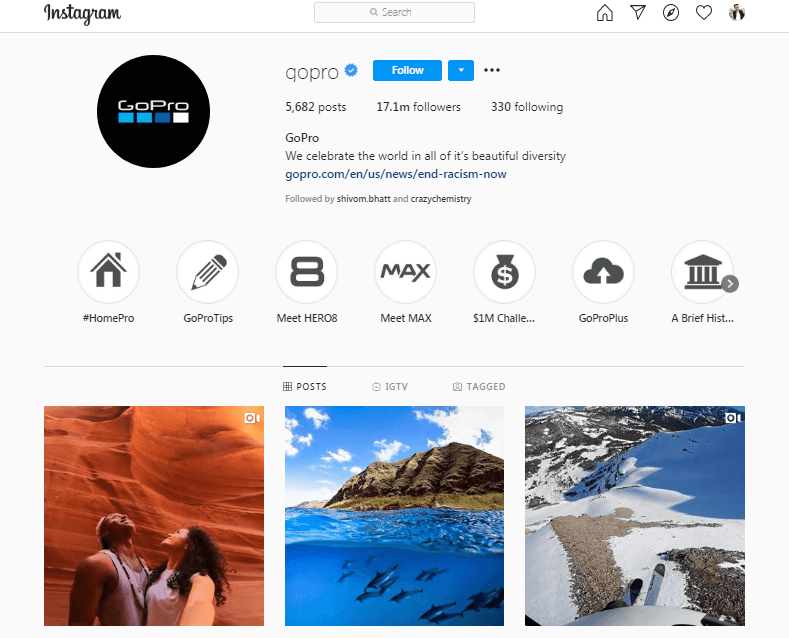 Source
Source
The genius social media strategists at GoPro use each network distinctly. They use Facebook to stimulate brand awareness, engage with their existing customers, and access new clients. They will also create Instagram stories to foster user-generated content and display the quality of their merchandise. On Twitter, you will find GoPro product announcements while their YouTube channel has video tutorials and tips.
If you are going to use different platforms, then you need to optimize content and post them strategically. So, first, perform thorough research to determine where it is that your target audience is. It is beneficial not to waste time and resources on internet communities that do not have any interest in your brand on products.
Businesses do not function in isolation. You do have competitors that keep you on your toes with their social media game plan. To optimize your social media blueprint, you need to be aware of what their tactics are. Whom do they target? What are their goals? Where do they meet most potential clients? Which platforms and keywords have they dominated?
Conduct competitor research via tools like BuzzSumo to bring to the light what your rival’s weakness and strengths are. Such information will help you to construct better policies for social media audiences. Exploit the gaps where possible.
Audit your performance too to improve on your tactics. Your appraisal will help direct you on the best times to post the most engaging content type and form and what your limitations are.
Conclusion
An optimized social media strategy will infuse your marketing efforts with purpose and help you to meet your business’s objectives. Use the steps above to create a robust social media presence then audit and tweak it to perfection.
Sumeet Anand is a Digital Marketing Expert, who specializes in SEO, social media marketing, and content marketing. You can find him on Twitter @Sumeetanand143 or connect with him on LinkedIn.
The post How to plan your social media strategy for any business appeared first on Search Engine Watch.



